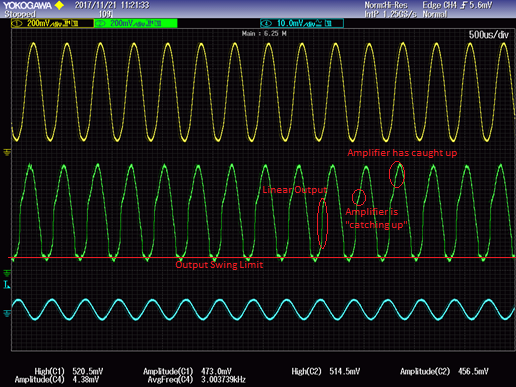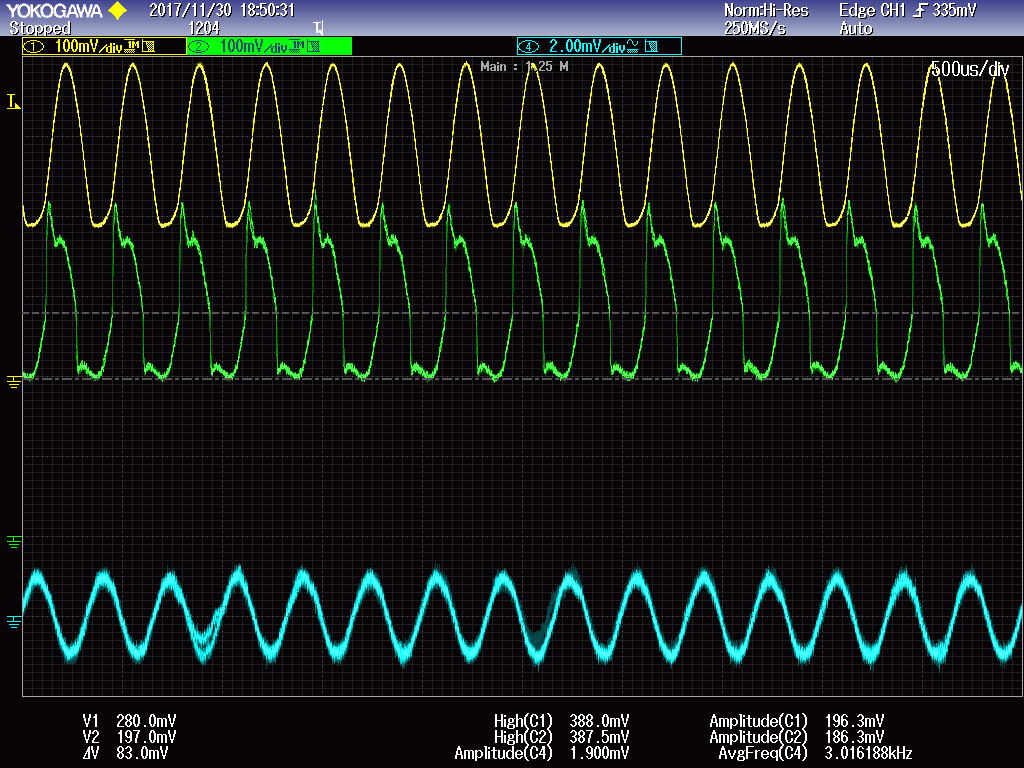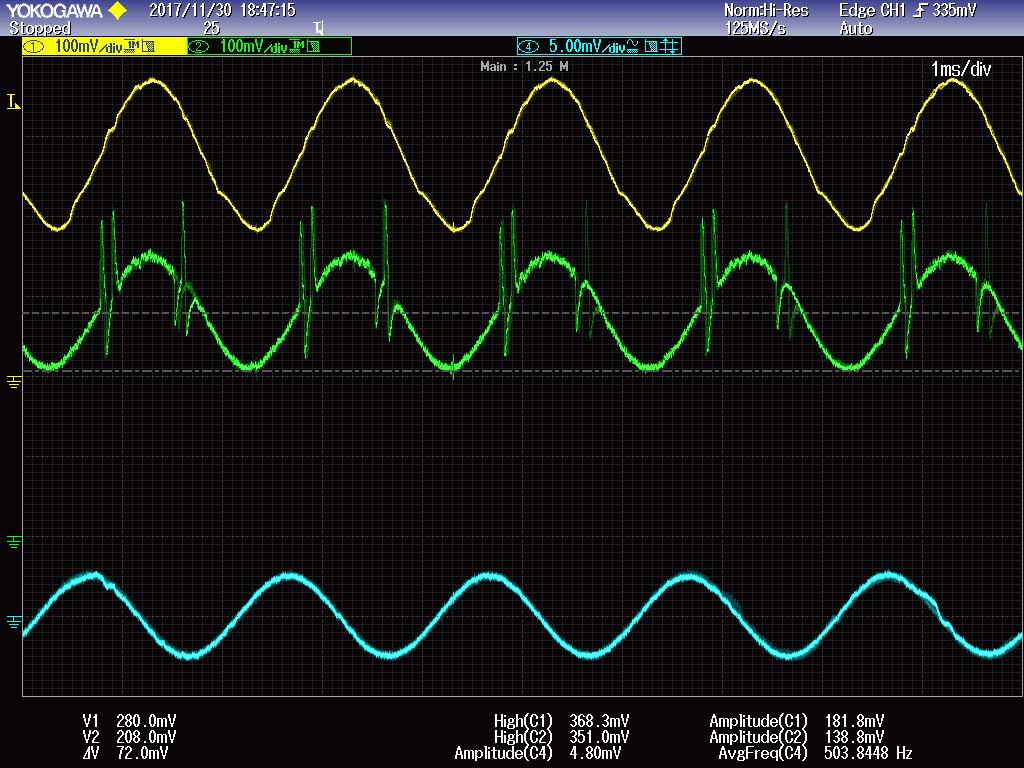Other Parts Discussed in Thread: TINA-TI
Dear Specialists,
My customer is evaluating TLV9062.
He is encountering crossover distortion and distortion.
I would be grateful if you could advise.
---
I am considering TLV9062 for widening bandwidth and reducing current consumption than previous model.
However, crossover distortion is observed less than 1kHz.
Around 3kHz, distortion is observed.
More than 5kHz, it still distorted.
I'd like to know how to improve crossover distortion and distortion.
---
I appreciate your great help in advance.
Best regards,
Shinichi




